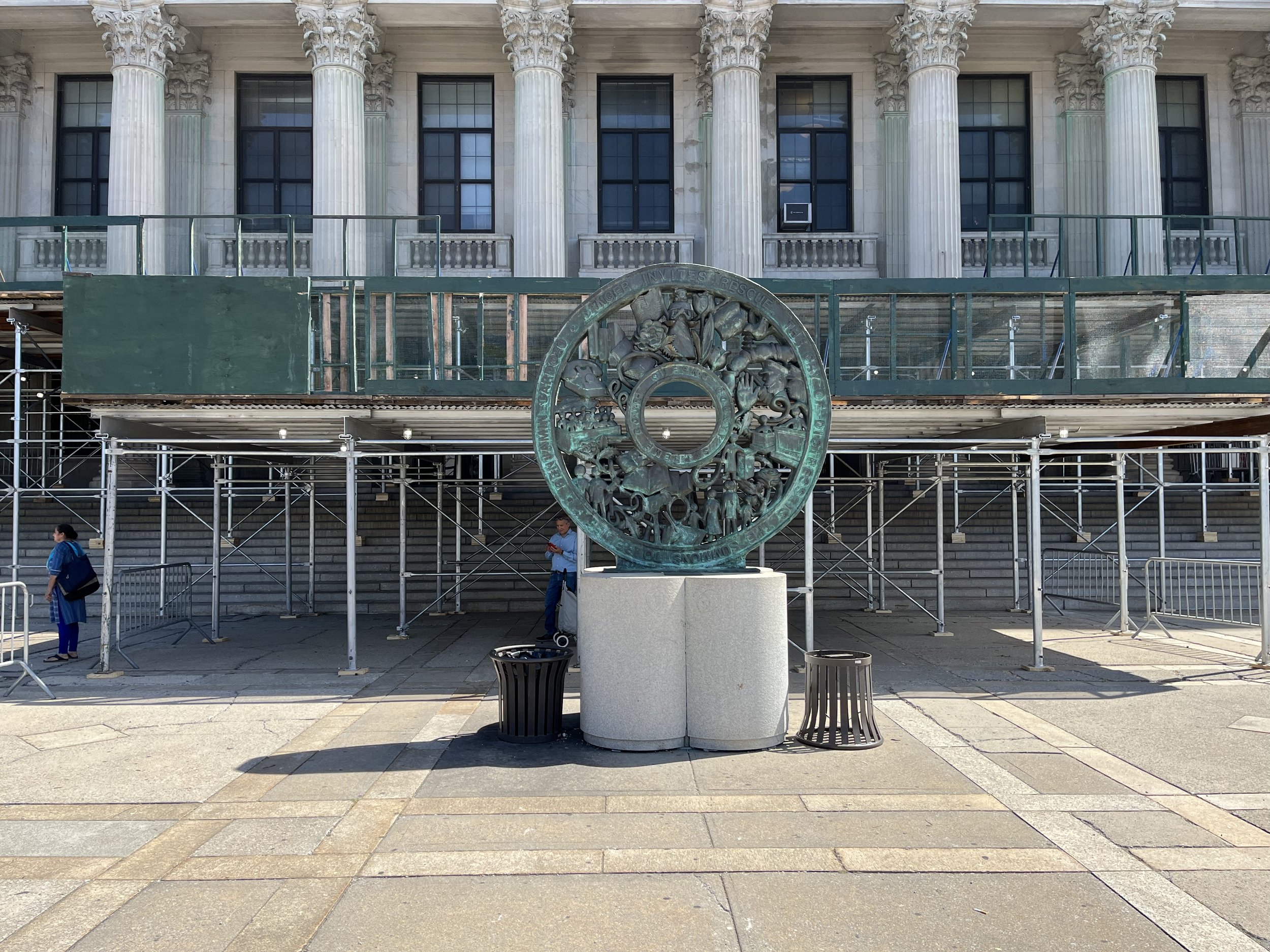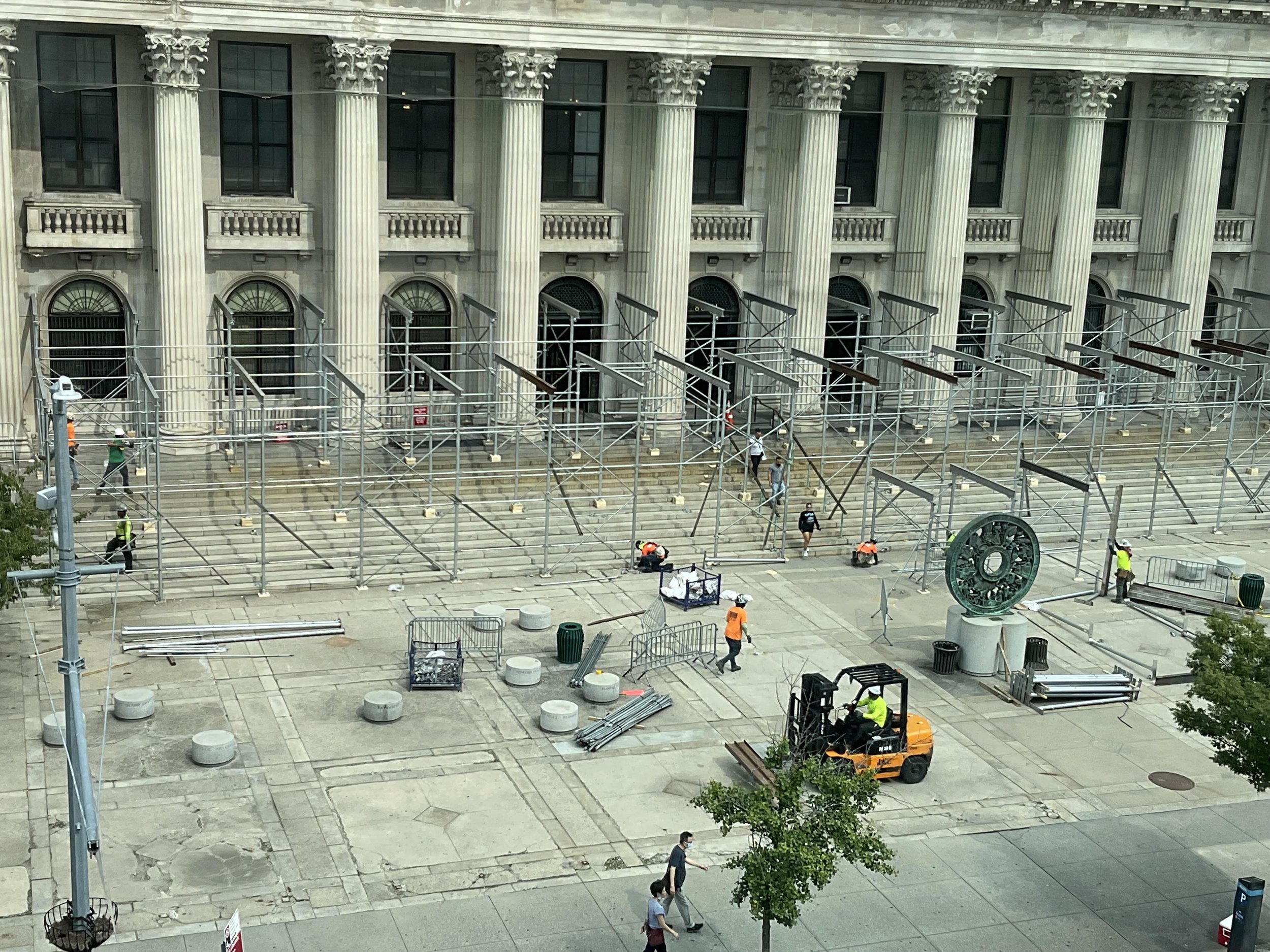The mayor said Queens court’s scaffolding was coming down – it’s only gotten bigger
/The scaffolding outside of the Queens County Supreme Court, Civil Term courthouse has grown larger this week after Mayor Eric Adams promised it would be replaced with netting last month. Photo via Mark WelikY
By Jacob Kaye
Last month, Mayor Eric Adams announced that his administration was taking on the scourge of scaffolding throughout New York City. As a start, the mayor said the city would bring to an end the green sheds outside of the Queens County Supreme Court, Civil Term courthouse, which have darkened the doorway of the historic court building for over a dozen years.
But this week, judges, attorneys and court staff were shocked to see that the scaffolding was not being taken down but instead growing, stretching further toward Sutphin Boulevard and creating a narrow, shadowy walkway as the only way to enter and exit the building.
“It's quite a structure,” said Mark Welicky, the pro bono coordinator and executive director of the Queens Volunteer Lawyers Project whose office is just across the street from the courthouse.
Construction on the new scaffolding appeared to begin earlier this week at the courthouse, which is managed by the city’s Department of Citywide Administrative Services.
On Monday, workers appeared to be taking the old scaffolding down. Then, dozens of workers were spotted on Tuesday putting together the new structure. On Wednesday, its final form was revealed.
While the scaffolding that sat atop the stairs leading up to the courthouse last week covered the facade of the first floor of the building, the new scaffolding extends across each of the courthouse’s approximately two dozen steps. It also includes additional shedding that covers a portion of the building’s courtyard.
The shedding comes just within a few feet of the courthouse’s notable courtyard sculpture, which was first installed in 1998.
The new scaffolding outside of the Queens County Supreme Court, Civil Term courthouse. Photo by Michael Nussbaum
It appears to be a far cry from what the mayor promised only four weeks ago.
In late July, Adams said that the Queens Supreme Court building would be the first city-owned structure to have netting installed in place of scaffolding. The 90-year-old courthouse first saw the scaffolding go up in front of its doors in 2009, after DCAS found that some of the building’s Alabama limestone facade was crumbling. Fourteen years later, the city had yet to secure the $30 million required to repair the building’s facade, and so the scaffolding has remained, costing taxpayers nearly half a million dollars since the day it first went up.
“Sidewalk sheds, also known as scaffolding, are the ugly green boxes that line our sidewalks,” Adams said in July. “They block the sunlight, keep pedestrians away from businesses and are a magnet for illegal activity.”
“Look at the Supreme Court building in Queens County,” he added.
Anessa Hodgson, the top spokesperson for DCAS, told the Eagle that while the protective netting has begun to be installed along the courthouse’s crumbling facade, the new scaffolding is meant to protect passersby from falling debris from the roof.
“We remain aligned with the Mayor's initiative to Get Sheds Down and will continue to seek out more appealing alternatives to traditional sidewalk sheds while keeping safety front of mind for all New Yorkers,” Hodgson said in a statement to the Eagle.
The roofing project, which previously has not been reported, is expected to soon begin and be completed by the end of 2024.
“While these efforts are ongoing, we have added shedding for a separate roofing project as we make much needed repairs,” Hodgson said.
The new scaffolding outside of the Queens County Supreme Court, Civil Term courthouse is constructed on Tuesday, Aug. 22, 2023. Photo via Mark Weliky
But the Adams administration’s netting pilot project at the Queens Supreme Court building may not be the solution to the city’s scaffolding problem Adams promised it would be.
Not only are there parts of the courthouse that DCAS officials say are not suitable for netting, but with netting in place, some work cannot be done. According to a DCAS official, some facade repair work cannot be completed with the netting covering the front of the building.
The mayor’s office did not respond to request for comment on the new shedding on Wednesday.
Longtime Queens Supreme Court Justice Joseph Esposito said that after hearing the news last month that the scaffolding was set to come down, seeing more scaffolding built this week was a “disappointment.”
“I work here every day, and that scaffolding really, really hurts to look at – to be quite honest about it, it's really an eyesore,” Esposito said. “It's been up for so long that after a while you just take it for granted and you don't appreciate the beautiful building that you're in, and it's sad to see that happening.”
“Maybe under the new administration they'll fix the roof and then they'll take it down and we'll be able to have a beautiful building again,” he added.
Justice Marguerite Grays, who serves as the administrative judge of the Queens County Supreme Court, Civil Term, did not respond to requests for comment on the new shedding on Wednesday.
Grays previously told the Eagle that she was “concerned” about the scaffolding prior to Adams’ July announcement.
While Grays told the Eagle in early July that she would like to see the facade project completed and the building returned to its past glory, she said she also understands and agrees with the need to keep people safe from potential falling debris.
“We want to make sure that it's safe for those who are passing on any side of the building,” Grays said. “That’s the purpose of the scaffolding. I don't want any members of the public or members of this court family injured.”
“It’s a beautiful building, and, of course, we want the building maintained,” she added.
The courthouse, which houses the borough’s Supreme Court Civil Term, Surrogate’s Court and the Queens County Clerk’s office, was built in 1936.
Originally called the Queens General Court, the building was built through the Works Progress Administration and cost around $5 million to construct.






